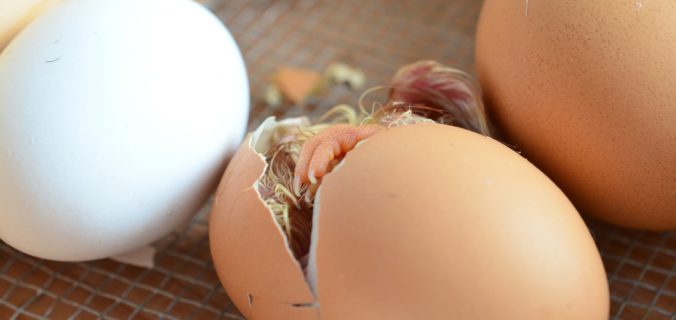What is an egg turner?
An egg turner is a device that automatically rocks or turns eggs during incubation. This would normally be done by the mother, but when artificially incubating eggs you must keep them moving. This is to keep the embryo from settling to the bottom and eventually sticking to the membrane.
While most turners gently, slowly rock the eggs and do not “turn” the eggs, some roll the eggs. Either kind will work fine as long as the movement is slow and not abrupt.
If you wanted, you could be an egg turner and do it manually. They need to be turned at least 3 times of day and it should be done an odd number of times each day. This will insure the embryos don’t sit on the same side of the eggs two nights in a row.
For each incubator model, there will be a specific automatic egg turner that will fit and operate inside the dimensions of the incubator. Make sure to get the right one for your chosen incubator.
They will typically have different size racks to hold different size eggs. Ones for chickens, ducks and quail are the most common. Depending on the eggs to be incubated and the size of your eggs the turner racks will hold a different number of eggs.
Why do you need an egg turner?
Simply – to increase your incubation success rate! The eggs must be turned daily during the majority of the incubation process. All except that last three days.
Like I said earlier, you could turn the eggs manually. That becomes a hassle over the 18-21 days depending on the type of eggs you are incubating. The more often you forget or only do it once a day, your hatch rate goes down.
The egg turner will gently turn the eggs on a consistent basis without you having to remember to do it. It never forgets or does it too often or not often enough.
How to use an egg turner properly!
The number one thing I have learned over the years and a lot of people get wrong is to not start turning their eggs immediately. By this I mean while you are collecting eggs.
Personally, I have small flock and that requires me to collect eggs over a seven day period in order to have enough to incubate. I wait until that seventh day to place them all into the incubator at the same time. Not sure what most people do or how they handle their eggs during this time, but I have learned they go on the turner. This alone has led to an increase in my hatch rate.
Room temperature is fine, just make sure that however you plan to turn them during incubation, that you turn them the same way between collection and the start of incubation.
When using a turner with racks. First make sure you have the correct size rack for the size eggs you are incubating. Then place the eggs into the rack small, pointy side down. Finally, plug it in, place it into the incubator and let it do it’s job.
I have read recently a recommendation to twist the eggs 90 degrees in the racks once or twice a week. I have just started to do this so no real opinion on if it is helpful or harmful. Please comment below if you have experience with this practice.
For a more detailed approach, check out these instructions for the Model 3200 Egg Turner.

Thank you so very much. I have 2 baby quails that are doing great so far. They are eating and drinking really well. They keep wanting me to hold them though. I love them and your advice is great. 💕